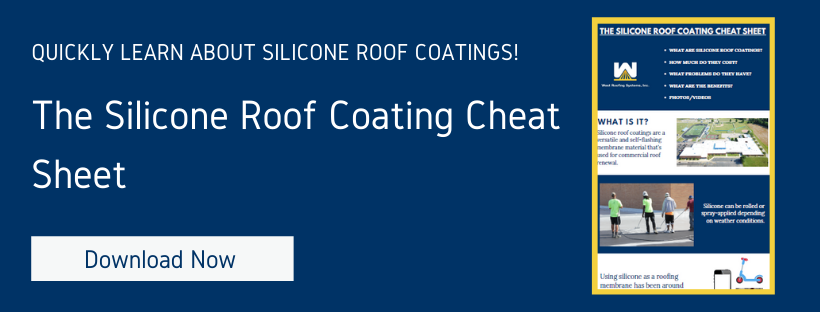West Roofing Systems has been in commercial roofing since 1979. Over the years, we’ve seen two significant things that are wrong with the industry:
- Building owners opt for a complete tear-off instead of a re-roof when most of the existing insulation is dry and in good shape.
- Building owners ignore restoration opportunities when the installation warranty has ended.
We’ll go through both of these scenarios in more detail.
But first, I wanted you to be aware that this article isn’t written on opinion. We’ve been a company for over 40 years, so everything here is factual.
This article has been reviewed, edited, and approved for publishing by a commercial roofing expert with more than 30 years of experience.
Problem #1 – Building owners opt for a complete tear-off instead of a re-roof when most of the existing insulation is dry and in good shape.
Property owners begin collecting quotes when a roof leaks and there’s no warranty. After each roofing contractor has surveyed the roof, accessed the damage, and submitted a proposal, the owner starts comparing them.
Some contractors propose to rip everything off and start “fresh.” This is completely fine and something we’d even recommend, as long as there’s evidence that more than 25% of the roof’s insulation is saturated.
The problem is that, in some cases, 75-99% of the roof’s insulation is dry and in good shape. So why consider tearing it all off?
Some may want to simply start “fresh,” and that’s fine. Every building owner can do as they please.
But a more cost-effective approach is to only remove the saturated/wet areas, replace them with similar material, and then install a roofing system over the entire roof.
Problem #2 – Building owners ignore restoration opportunities when the installation warranty has ended.
Here’s the scenario: A building owner gets a new metal, TPO, or spray foam roof. The new roof comes with a 10-20-year warranty.
Once the warranty ends, usually nothing is done, especially if there hasn’t been any leaking.
The problem is that, eventually, that roof will leak. And the damage that’s occurred will make a roof ineligible to be restored.
Here’s a video of a rubber roof being restored with a silicone roof coating system:
Let’s go through a quick example showing a ginormous cost difference:
John Doe got a new TPO roof installed in 2007. The roof is 50,000 sq. ft and it comes with a 15-year warranty.
It’s 2022, and the warranty is about to expire. There’s been annual maintenance on the roof and there’s never been any severe leaking.
The annual maintenance stops now that the warranty is over, and the roof is “on its own.”
It’s 2027, and there have been some leaks in the building. When a contractor surveys the roof, it’s determined that 40% of its insulation is wet. The only way to solve the problem is to perform a complete tear-off.
*A complete tear-off will likely cost $10 – $15 per square foot. 50,000 x 12.50 = $625,000.
Let’s rewind to 2022.
John realizes the warranty is about to expire this year and begins to research how to extend the warranty.
He reads about silicone roof coating systems and realizes he might be able to restore his roof and get a new 10-20-year warranty.
He reads that if the roof hits these 3 checkpoints, he can install the system:
- The roof has had at least annual maintenance
- The seams are in decent/good shape
- Less than 25% of roofs insulation is wet/saturated
Since his roof has been maintained, his roof hits the 3 checkpoints and can do a restoration.
A restoration involves reinforcing the seams and installing the coating over the existing roof.
*A restoration costs around $4 – $6 per square foot. 50,000 x $5 = $250,000.
$625,000 versus $250,000
***NOTE: Cost is projected. The point is that a restore, instead of a complete tear-off, is a much more cost-effective approach that’s not taken advantage of more often.
Conclusion
Hopefully, you’ve learned that avoiding a complete tear-off is good. It’s a good thing for the environment and a good thing for your company’s bottom line.
In short:
- If you’re quoted a complete tear-off, get evidence with saturated core samples or through an infrared survey showing more than 25% of the roof is holding water.
- When the warranty expires on the initial installation, do not let the roof go just because it’s not leaking today. It will leak eventually. The repair will cost more than if you took the proactive approach today.

